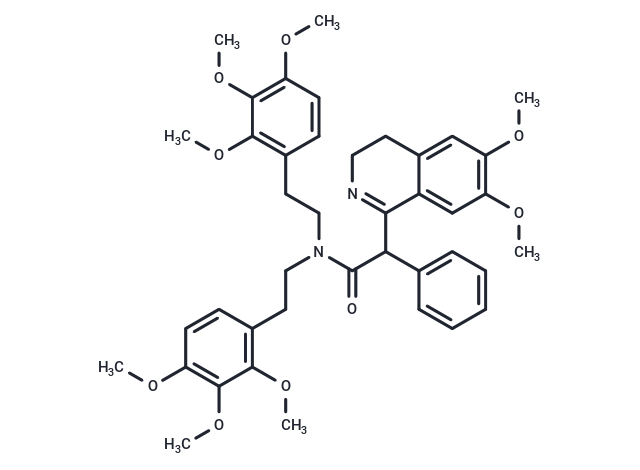Shopping Cart
Remove All Your shopping cart is currently empty
Your shopping cart is currently empty
Pinokalant (LOE-908) is a novel non-selective cation channel inhibitor.Pinokalant significantly reduces cortical infarct volume in in vivo experiments, improves the metabolic and electrophysiological status of the ischemic penumbra region, and reduces the size of the lesion on magnetic resonance images in the acute phase after middle cerebral artery occlusion in rats.Pinokalant is a potential SARS-CoV-2 protease inhibitor for the study of stroke.

| Pack Size | Price | USA Warehouse | Global Warehouse | Quantity |
|---|---|---|---|---|
| 1 mg | $195 | In Stock | In Stock | |
| 5 mg | $430 | In Stock | In Stock | |
| 10 mg | $636 | - | In Stock | |
| 25 mg | $987 | 8-10 weeks | 8-10 weeks | |
| 50 mg | $1,360 | 8-10 weeks | 8-10 weeks |
| Description | Pinokalant (LOE-908) is a novel non-selective cation channel inhibitor.Pinokalant significantly reduces cortical infarct volume in in vivo experiments, improves the metabolic and electrophysiological status of the ischemic penumbra region, and reduces the size of the lesion on magnetic resonance images in the acute phase after middle cerebral artery occlusion in rats.Pinokalant is a potential SARS-CoV-2 protease inhibitor for the study of stroke. |
| In vitro | Pinokalant leads to a substantial decrease in cortical infarct volume, reducing it from 33.8 mm³ to 24.5 mm³.[1] |
| Synonyms | LOE-908 |
| Molecular Weight | 712.83 |
| Formula | C41H48N2O9 |
| Cas No. | 149759-26-2 |
| Smiles | C(C(N(CCC1=C(OC)C(OC)=C(OC)C=C1)CCC2=C(OC)C(OC)=C(OC)C=C2)=O)(C=3C=4C(=CC(OC)=C(OC)C4)CCN3)C5=CC=CC=C5 |
| Storage | Powder: -20°C for 3 years | In solvent: -80°C for 1 year | Shipping with blue ice/Shipping at ambient temperature. |
| Size | Quantity | Unit Price | Amount | Operation |
|---|

Copyright © 2015-2026 TargetMol Chemicals Inc. All Rights Reserved.